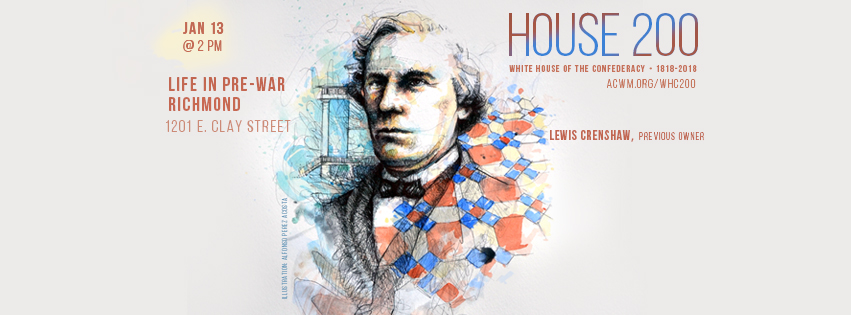By Bryce VanStavern
White House Specialist
On December 26, 1811, Bank of Virginia President Abraham Venable died in a fire in the Richmond Theater. This event changed the life of another Richmond resident, a doctor named John Brockenbrough.
Born in 1773, Brockenbrough was a doctor who seems to have rarely, if ever, practiced medicine. He went to medical school at the University of Edinburgh in Scotland but upon returning to the United States became involved with the new Bank of Virginia. This bank was chartered on January 30, 1804 and Brockenbrough was associated with it almost from day one. Appointed one of the banks directors, Brockenbrough worked in the bank as a cashier. On January 9, 1812, after Venable’s death, he was appointed the bank’s new President. He would hold the position for 32 years.
While Brockenbrough acquired much of his money and position through his work with the Bank of Virginia, he launched himself to the top of the Richmond social ladder the old-fashioned way, he married well. Sometime after 1793 Brockenbrough married Gabriella Harvie Randolph the widow of Thomas Mann Randolph.
The Randolphs were one of Virginia’s most prominent families and Gabriella brought her own land holdings to the marriage. Her property and social status completed what was needed to make the Brockenbroughs one of the most prominent couples in Richmond. Certainly such a couple needed a home worthy of their place in the city and there was only one place it could be, Court End.
Court End, on the northern edge of the city, was the wealthiest neighborhood in Richmond, where the “one percent” lived. In March 1816, Brockenbrough purchased a lot at 12th and Clay Streets in Court End. He paid $10,000 for the property. In May of 1817 he purchased the lot next door for $5,000, guaranteeing that he and Gabriella would always have an unobstructed view of the Shockoe Valley.
While there is no “smoking gun” documenting beyond doubt that the architect hired by Brockenbrough was Robert Mills, there is certainly enough evidence to make Mills the most likely candidate. Mills and Brockenbrough had worked together on the City Building Committee to create the Monumental Church as a memorial to those who died in the theater fire. And many stylistic features of the house point to Mills as the creative mind behind the home. It was a masterpiece of Greek Revival architecture. As built the house had a basement and two floors.
The Brockenbroughs made the first large change to the house in 1822, when they added the large portico on the south side (back) of the house. This change gave the house the look of a large estate and also caused the house to spend its life looking as though it was built backward. In 1828, the Brockenbroughs made the rectangular entrance hall oval in shape and changed the square main staircase to a spiral.
The Brockenbroughs lived at 1200 Clay Street until 1844 when they sold the property to James Morson for $20,000. While Dr. Brockenbrough was a very prominent individual in Richmond, he left the city in 1844 to become the proprietor of the Warm Springs Company in Bath County. He died there in 1852. During the Civil War years, long after Brockenbrough’s departure, many Richmond residents still referred to the house at 1200 Clay Street as the Brockenbrough House.
Learn more about John Brockenbrough and the other pre-war owners of the house as Dr. Gregg Kimball leads the first in our series of monthly House 200 lectures Saturday, January 13 at 2pm.
